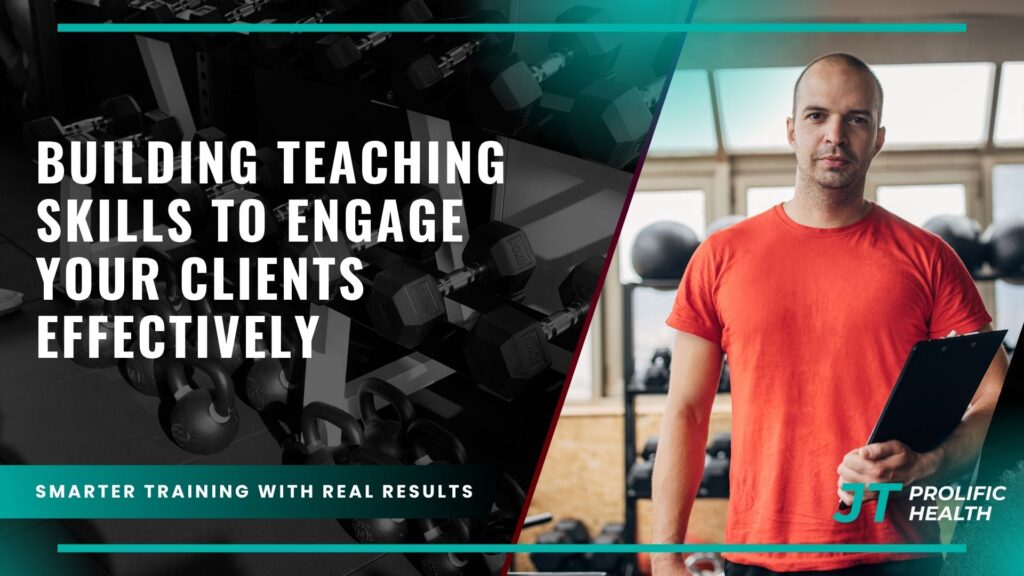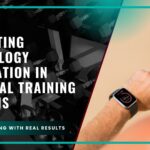The ability to teach effectively stands as one of the most crucial yet often overlooked skills in the personal training profession. While many trainers focus extensively on developing their knowledge of exercise science, anatomy, and program design, the capacity to communicate that knowledge clearly and engagingly to clients can make the difference between a successful training relationship and one that falls short of its potential.
Teaching skills in personal training extend far beyond simply demonstrating exercises or counting repetitions. They encompass the art of breaking down complex movements into digestible components, adapting communication styles to match individual learning preferences, and creating an environment where clients feel confident to ask questions and make mistakes as part of their learning process. These instructional techniques for trainers form the foundation of client engagement, retention, and ultimately, success.
In today’s competitive fitness landscape, clients have numerous options for their health and wellness journey. What sets exceptional personal trainers apart is their ability to not just prescribe effective workouts, but to educate, motivate, and empower their clients through superior teaching methods. This educational approach transforms the trainer-client relationship from a simple service provider dynamic into a collaborative partnership focused on long-term growth and understanding.
The development of strong teaching skills requires intentional practice and continuous refinement. It involves understanding how different people process information, recognizing the various stages of skill acquisition, and adapting instructional methods to meet clients where they are in their fitness journey. Whether working with complete beginners who need foundational movement patterns or experienced athletes looking to refine technique, effective teaching skills enable trainers to communicate complex concepts in ways that resonate with each individual client.
Moreover, excellent teaching skills contribute significantly to client safety, confidence, and independence. When trainers can effectively communicate proper form, breathing techniques, and the reasoning behind specific exercises, clients develop a deeper understanding that extends beyond their training sessions. This educational foundation empowers clients to make informed decisions about their fitness routines and helps them maintain proper technique even when training independently.
Key Takeaways
For additional context, see this comprehensive guide.
- Effective communication is the cornerstone of successful personal training: The ability to explain complex movements and concepts in simple, understandable terms directly impacts client comprehension and exercise execution. Clear communication reduces confusion, prevents injuries, and accelerates learning.
- Visual, auditory, and kinesthetic learning styles require different instructional approaches: Recognizing that clients learn differently allows trainers to adapt their teaching methods. Some clients respond best to visual demonstrations, others to verbal cues, and many benefit from hands-on guidance and tactile feedback.
- Progressive instruction builds confidence and competence: Breaking down complex exercises into manageable components and teaching them systematically helps clients master movements without feeling overwhelmed. This approach builds both physical skills and mental confidence.
- Active listening enhances teaching effectiveness: Understanding client concerns, questions, and feedback allows trainers to adjust their instructional approach in real-time. This responsiveness creates a more personalized and effective learning environment.
- Positive reinforcement accelerates learning: Acknowledging progress, celebrating improvements, and providing constructive feedback creates an encouraging atmosphere that motivates clients to continue learning and pushing their boundaries.
- Teaching skills directly impact client retention and referrals: Clients who feel they’re learning and growing are more likely to continue their training relationship and recommend the trainer to others. Effective teaching creates lasting value beyond individual workout sessions.
- Adaptability in teaching methods accommodates diverse client needs: Successful trainers develop a toolkit of instructional techniques that can be modified based on client age, fitness level, learning style, and specific goals or limitations.
Understanding the Foundation of Effective Teaching in Personal Training


For additional context, see detailed information on this topic.
The foundation of effective teaching in personal training rests on understanding that every client brings unique experiences, learning preferences, and challenges to their fitness journey. Unlike traditional classroom settings where information flows primarily in one direction, personal training requires dynamic, interactive teaching that adapts continuously based on client responses and progress. This personalized approach demands that trainers develop a comprehensive understanding of adult learning principles and how they apply to physical skill acquisition.
Successful teaching begins with establishing clear learning objectives for each session and communicating these goals to clients in language they can understand. Rather than simply stating “we’re going to work on deadlifts today,” effective trainers explain the purpose behind each exercise, how it contributes to the client’s overall goals, and what specific skills or improvements they’ll be working toward. This context helps clients understand the relevance of each activity and increases their engagement in the learning process.
The physical environment also plays a crucial role in effective teaching. Creating a space where clients feel safe to make mistakes and ask questions encourages active participation in the learning process. This involves managing gym distractions, ensuring adequate space for demonstrations, and positioning equipment in ways that facilitate clear sightlines for instruction. Additionally, considering factors like music volume, lighting, and privacy helps create an optimal learning environment.
Understanding the stages of motor learning—cognitive, associative, and autonomous—enables trainers to adjust their teaching intensity and focus appropriately. During the cognitive stage, clients need detailed explanations and frequent feedback as they’re still understanding the basic movement pattern. In the associative stage, instruction shifts toward refining technique and reducing errors, while the autonomous stage focuses on performance optimization and advanced variations.
Developing Clear Communication and Demonstration Techniques


Clear communication forms the backbone of effective teaching in personal training, requiring trainers to master both verbal and non-verbal communication skills. Verbal instruction should be concise, specific, and free from technical jargon that might confuse clients. Instead of saying “engage your core and maintain a neutral spine during the eccentric phase,” a more effective approach might be “tighten your stomach muscles and keep your back straight as you lower the weight slowly.” This translation of technical knowledge into accessible language ensures clients understand exactly what’s expected of them.
The timing of verbal cues is equally important as their content. Providing too much information at once can overwhelm clients, while too little guidance can leave them uncertain about proper technique. Effective trainers learn to sequence their verbal cues, starting with the most critical safety or technique points and gradually adding refinements as clients master the basic movement pattern. This progressive approach allows clients to absorb and implement information at a manageable pace.
Demonstration techniques require careful consideration of positioning, pace, and emphasis. When demonstrating an exercise, trainers should position themselves so clients can clearly see the movement from the most instructive angle. For some exercises, this might mean demonstrating from the side to show the full range of motion, while others benefit from a front-facing demonstration to highlight hand or foot positioning. The demonstration should be performed at a slower pace than normal execution to allow clients to observe key movement components.
Non-verbal communication, including body language, facial expressions, and gestures, significantly impacts the effectiveness of instruction. Maintaining open body language, making appropriate eye contact, and using encouraging facial expressions creates a positive learning environment. Hand gestures can be particularly powerful for reinforcing verbal cues, such as showing the direction of movement or indicating the desired muscle engagement. However, trainers must be mindful that gestures should enhance rather than distract from their verbal instruction.
The use of analogies and metaphors can make complex movement concepts more relatable and memorable. Comparing a squat to sitting back in a chair, or describing a plank as maintaining the body like a rigid board, helps clients visualize proper form using familiar references. These teaching tools are particularly effective for clients who struggle with traditional technical explanations and need alternative ways to understand movement patterns.
Adapting Instruction to Different Learning Styles and Client Needs


Recognizing and adapting to different learning styles represents a crucial component of effective teaching in personal training. Visual learners benefit most from clear demonstrations, written exercise programs, and visual aids such as anatomy charts or movement diagrams. For these clients, trainers should emphasize showing rather than just telling, using mirrors strategically to help clients see their own form, and providing visual reference points in the gym environment to guide movement patterns.
Auditory learners respond best to detailed verbal explanations, rhythmic counting, and audio cues that help them understand timing and tempo. These clients often benefit from trainers who can explain the “why” behind each exercise, describe the sensations they should feel during movement, and use verbal imagery to guide proper form. Creating verbal mantras or cues that clients can repeat to themselves during exercises can be particularly effective for auditory learners.
Kinesthetic learners need hands-on experience and tactile feedback to understand movement patterns effectively. For these clients, trainers might use light physical guidance to help them feel proper positioning, incorporate resistance bands or other tools that provide tactile feedback, or design exercises that emphasize the physical sensations of correct form. However, any physical guidance must be provided with clear consent and professional boundaries.
Age-related considerations significantly impact teaching approaches. Younger clients might respond well to technology integration, gamified challenges, and high-energy instruction, while older clients often prefer more detailed explanations, slower progression, and emphasis on safety and joint health. Understanding generational differences in communication preferences helps trainers adjust their teaching style to resonate with clients across different age groups.
Fitness experience levels require dramatically different instructional approaches. Complete beginners need foundational movement education, starting with basic bodyweight exercises and progressing slowly to more complex movements. For those just starting their fitness journey, understanding when to seek professional guidance can make a significant difference in their success and safety. Intermediate clients benefit from technique refinement and exercise progressions, while advanced clients might need subtle adjustments and performance optimization strategies.
Cultural and language considerations also influence teaching effectiveness. Trainers working with clients from diverse backgrounds must be sensitive to different communication styles, comfort levels with physical proximity, and potential language barriers. Using simple, clear language, being patient with questions, and being aware of cultural norms around personal space and physical contact ensures that all clients feel comfortable and respected during instruction.
Building Engagement Through Interactive Teaching Methods
Interactive teaching methods transform passive exercise sessions into engaging learning experiences that keep clients mentally stimulated and emotionally invested in their fitness journey. Rather than simply directing clients through predetermined routines, interactive approaches encourage questions, problem-solving, and active participation in exercise selection and progression decisions. This collaborative method helps clients develop a deeper understanding of fitness principles and increases their sense of ownership over their progress.
Question-based teaching techniques encourage clients to think critically about their workouts and develop problem-solving skills. Instead of immediately correcting a client’s form, trainers can ask guiding questions like “How did that movement feel?” or “What do you think might help you maintain better balance?” This approach helps clients develop body awareness and analytical skills that serve them well beyond their training sessions.
Incorporating client feedback loops creates opportunities for continuous improvement in teaching methods. Regular check-ins about exercise difficulty, comfort levels, and understanding help trainers adjust their instruction in real-time. This might involve asking clients to rate their confidence in performing an exercise, explain back what they’ve learned, or identify which cues work best for them. This feedback helps trainers refine their approach for each individual client.
Goal-setting workshops and progress review sessions provide structured opportunities for interactive learning. During these sessions, trainers can educate clients about realistic timelines, effective goal-setting strategies, and methods for tracking progress. Understanding how progress is tracked helps clients become more engaged in their own development and provides valuable teaching moments about fitness science and methodology.
Educational mini-sessions can be woven throughout workouts to provide context and deepen understanding. These brief teaching moments might cover topics like muscle function, energy systems, or recovery principles. By connecting immediate exercise experiences to broader fitness concepts, trainers help clients develop comprehensive knowledge that enhances their long-term success and independence.
Technology integration offers additional opportunities for interactive learning. Fitness apps, video analysis tools, and wearable devices can provide immediate feedback and create engaging ways to track and discuss progress. However, technology should enhance rather than replace human instruction, serving as a tool to facilitate better communication and understanding between trainer and client.
Providing Effective Feedback and Motivation
Effective feedback delivery represents one of the most critical teaching skills for personal trainers, requiring a delicate balance between correction, encouragement, and motivation. The timing, tone, and content of feedback significantly impact client learning, confidence, and long-term adherence to their fitness program. Skilled trainers learn to provide feedback that is specific, actionable, and delivered in a way that motivates rather than discourages continued effort.
Immediate feedback during exercise execution helps clients make real-time adjustments and prevents the reinforcement of incorrect movement patterns. However, this feedback must be prioritized to address the most critical safety or effectiveness issues first. Rather than overwhelming clients with multiple corrections simultaneously, effective trainers focus on one or two key points per set, allowing clients to process and implement changes gradually.
The sandwich method of feedback delivery—positive observation, constructive correction, positive reinforcement—helps maintain client confidence while addressing areas for improvement. For example, “Your squat depth has really improved, now let’s focus on keeping your knees aligned over your toes, and I can see you’re really concentrating on getting this right.” This approach acknowledges progress while providing specific guidance for continued improvement.
Motivational feedback goes beyond simple encouragement to include recognition of effort, progress acknowledgment, and connection to larger goals. Instead of generic praise like “good job,” effective trainers provide specific recognition such as “I noticed you maintained perfect form even when the exercise got challenging—that shows real strength and focus.” This type of feedback reinforces positive behaviors and builds client confidence in their abilities.
Understanding individual motivation triggers helps trainers tailor their feedback approach. Some clients respond well to challenge-based motivation, while others need gentle encouragement and reassurance. Some are motivated by competition and comparison, while others prefer focus on personal progress and self-improvement. Recognizing when clients need different types of support helps trainers adjust their motivational approach accordingly.
Long-term feedback strategies involve regular progress reviews, goal reassessment, and celebration of achievements. These sessions provide opportunities to reflect on improvements, adjust goals based on progress, and maintain motivation during challenging periods. Effective trainers document progress and use this information to provide concrete evidence of improvement, which can be particularly motivating during plateaus or setbacks.
Continuous Improvement and Professional Development
The development of teaching skills requires ongoing commitment to professional growth and continuous learning. The fitness industry constantly evolves with new research, techniques, and client populations, making it essential for trainers to regularly update their instructional methods and teaching approaches. This commitment to improvement not only enhances client outcomes but also contributes to trainer satisfaction and career longevity.
Self-reflection practices help trainers identify strengths and areas for improvement in their teaching methods. Regularly analyzing client responses, session effectiveness, and communication patterns provides valuable insights into teaching performance. Trainers might keep a teaching journal, record practice sessions for self-review, or seek feedback from trusted colleagues to gain perspective on their instructional techniques.
Continuing education opportunities specifically focused on teaching and communication skills complement traditional fitness education. Workshops on adult learning principles, communication techniques, and behavior change psychology provide valuable tools for enhancing instructional effectiveness. Many successful trainers also study teaching methods from other fields, such as sports coaching, corporate training, or traditional education, to expand their toolkit of instructional techniques.
Mentorship relationships, both as mentee and mentor, provide valuable opportunities for teaching skill development. Working with experienced trainers offers insights into advanced instructional techniques, while mentoring newer trainers helps refine communication skills and deepen understanding of teaching principles. These relationships create supportive environments for practicing new techniques and receiving constructive feedback.
Client feedback systems provide direct insights into teaching effectiveness and areas for improvement. Regular surveys, informal check-ins, and exit interviews help trainers understand how their instruction is received and what adjustments might enhance the learning experience. This feedback should be actively sought and thoughtfully implemented to continuously improve teaching methods.
Specialization in specific populations or training methods often requires developing specialized teaching skills. Working with older adults, youth athletes, or individuals with specific health conditions demands adapted communication styles and instructional approaches. Understanding optimal training frequency and other specialized knowledge areas requires continuous learning and skill development.
At Prolific Health, we recognize that exceptional teaching skills are fundamental to successful personal training outcomes. Our team continuously invests in professional development opportunities that enhance our ability to communicate effectively with clients, adapt instruction to individual needs, and create engaging learning experiences that support long-term fitness success.
Frequently Asked Questions
How can I improve my ability to explain complex exercises to clients?
Start by breaking down exercises into simple, sequential steps and use everyday language instead of technical terms. Practice explaining movements to friends or family members who aren’t familiar with fitness to test your clarity. Develop a library of analogies and visual references that help make abstract concepts more concrete and relatable.
What should I do when a client doesn’t understand my instructions?
First, try rephrasing your explanation using different words or analogies. If that doesn’t work, switch to a different teaching approach—if you used verbal instruction, try a visual demonstration, or if you demonstrated, try hands-on guidance (with permission). Be patient and remember that communication challenges are opportunities to improve your teaching skills.
How do I adapt my teaching style for different age groups?
Younger clients often respond well to technology integration, faster-paced instruction, and challenge-based motivation. Middle-aged clients typically appreciate detailed explanations and goal-oriented approaches. Older clients often benefit from slower progression, emphasis on safety, and more detailed explanations of exercise benefits. Always treat each client as an individual rather than making assumptions based solely on age.
What’s the best way to give corrective feedback without discouraging clients?
Use the sandwich method: start with something positive, provide specific corrective guidance, then end with encouragement. Focus on one or two key improvements at a time rather than overwhelming clients with multiple corrections. Frame corrections as opportunities for growth rather than failures, and always acknowledge effort and progress.
How can I tell if my teaching methods are effective?
Monitor client progress, engagement levels, and retention rates. Ask for regular feedback about your communication style and instructional clarity. Watch for non-verbal cues during sessions—confused expressions, hesitation, or repeated mistakes often indicate communication gaps. Proper preparation for training sessions includes planning how you’ll assess teaching effectiveness.
Should I adjust my teaching approach based on client personality types?
Yes, personality traits significantly impact learning preferences. Introverted clients might prefer quieter, more private instruction, while extroverted clients often thrive with more energetic, interactive approaches. Detail-oriented clients appreciate thorough explanations, while big-picture thinkers prefer understanding overall goals and concepts. Observe client responses and adjust accordingly.
How do I maintain client engagement during longer training sessions?
Vary your instructional methods throughout the session, incorporate interactive elements like questions and problem-solving, and connect exercises to client goals regularly. Use educational mini-sessions to break up physical activity, and encourage client participation in exercise selection and modification decisions. Keep energy levels appropriate to the client’s preferences and the time of day.
What role does nutrition education play in teaching skills for trainers?
Nutrition education requires the same clear communication and teaching principles as exercise instruction. Understanding what nutrition guidance trainers can provide helps ensure you stay within your scope of practice while still offering valuable education. Use simple language, practical examples, and gradual progression when teaching nutrition concepts, just as you would with exercise techniques.
Conclusion
Developing exceptional teaching skills represents one of the most valuable investments a personal trainer can make in their professional development and client success. These skills transform routine workout sessions into meaningful learning experiences that empower clients with knowledge, confidence, and the tools they need for long-term fitness success. The ability to communicate clearly, adapt instruction to individual needs, and create engaging learning environments sets exceptional trainers apart in an increasingly competitive industry.
The journey to becoming an effective teacher in personal training requires continuous learning, practice, and refinement. It demands understanding that each client brings unique learning preferences, challenges, and goals that require personalized instructional approaches. By mastering various communication methods, feedback techniques, and motivational strategies, trainers can create positive learning environments that accelerate client progress and satisfaction.
The impact of strong teaching skills extends far beyond individual training sessions. Clients who receive clear, engaging instruction develop deeper understanding of fitness principles, greater confidence in their abilities, and increased independence in their health and wellness journey. This educational foundation creates lasting value that clients carry with them throughout their lives, making the trainer’s investment in teaching skills a gift that continues giving long after formal training relationships end.
As the fitness industry continues to evolve, the trainers who thrive will be those who recognize that their role extends beyond exercise prescription to include education, motivation, and empowerment. By committing to continuous improvement in teaching skills and staying responsive to client needs and feedback, personal trainers can build rewarding careers while making meaningful differences in their clients’ lives. The combination of technical fitness knowledge and exceptional teaching ability creates a powerful foundation for success in the personal training profession.




